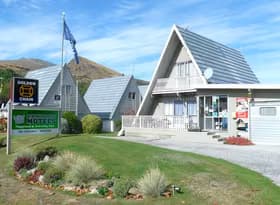Stats NZ released their latest subnational population estimates on Tuesday, providing us with our annual glimpse into regional population dynamics. In this article, we outline the key trends at a national level, and explore a few of the more interesting regional results.
Population growth slows, nearly everywhere
National population growth has slowed over the past year, from a (revised) 0.4% in the year to June 2021 to just 0.2% in the year to June 2022. Out of 67 territorial authorities, 56 experienced slower growth in the 2022 than 2021. This lower growth trend has been driven by a further deterioration in our net migration loss, and elevated deaths on the back of a year of influenza and COVID-19.
The previously published population for 2021 has been revised downwards, as net migration estimates have been revised. Nationally, our population as at June 2021 was 11,200 lower than previously thought, and Auckland is 11,500 lower.
From dramatic to subtle shifts in people
The dramatic fall of international net migration from 84,800 in 2020 to -6,500 in 2021 set the scene for some dramatic slowdowns in population growth around the Motu (country) in 2021. Areas which were highly reliant on international net migration were punished with population declines, including Auckland with an abrupt fall from 2.0% growth in 2020 to a 0.6% decline in 2021.
Moving from 2021 to 2022, the shifts in population are more subtle, with international net migration merely shuffling from -6,500 to -11,500. What has become apparent in 2022 is a slowdown in the pace of internal migration, meaning that fewer people are migrating within New Zealand. This trend appears to be driven by a combination of factors. For some suburban centres and lifestyle areas, internal migration rose rapidly in 2021 as the widespread adoption of working from home practices and house price differences made these areas more attractive. In addition, the slowdown in international net migration in 2021 may have reduced the pool of inherently mobile people to move internally in 2022.
This phenomenon is apparent in a number of suburban or satellite areas, such as Hauraki (from 2.3% annual population growth in 2021 to 0.9% in 2022), Kaipara (4.3% to 2.6%), Waipā (2.2% to 1.2%), Manawatu (2.5% to 1.5%) and Selwyn (7.7% to 4.8%).
Slower growth in most regions
Most regions have experienced slower population growth between 2021 and 2022. Northland’s growth slowed from 2.2% to 1.3% (but remained the fastest in the country), and the West Coast went from 0.3% growth to -0.6%. Auckland made a marginal improvement, from -0.6% to -0.5%, and likewise Southland from -0.3% to -0.1%. Otago improved from -0.2% to 0.6%, as Dunedin experienced a strong reduction in its net migration losses.
Changes of fortune for some areas
Some of the tourism hotspots hardest hit by the pandemic are showing a turnaround in their population fortunes. Population growth in Mackenzie has improved from -0.4% in 2021 to 0.7% in 2022, and Kaikoura from -1.0% to 0.0%. These improvements show that jobs are coming back as the borders are reopening, and are attracting residents back into these areas.
Buller is a good example of the complication of revisions. Stats NZ’s 2021 estimates indicated that Buller’s population in 2021 was 9,660, having declined in 2020 and 2021. However, Stats NZ’s 2022 estimates change that story, indicating a population of 9,870 in 2021, after two years of increases. According to the 2022 estimates, Buller’s population fell 1.4% to 9,730 in 2022, the largest fall in the country. Despite the fall, Buller’s 2022 population is larger than its previous estimate for 2021.
Chart 2 illustrates that revisions tend to get smaller over time, as more information comes to hand. However, figures for 2019-2022 will be subject to a final revision after the 2023 Census.
Population ages more quickly with net migration loss
International migrants are typically young and economically active, so our current net migration loss means we are ageing more quickly as a country. This aging is driven by both the loss of young people heading overseas, and fewer young people arriving. Nationally, the median age increased by 0.1 years in 2019 and 2020, but accelerated to 0.3 years in 2021 and 2022.
The age range is very broad across our 67 territorial authorities, with the oldest populations found in Thames-Coromandel (55.3 years) and Buller (53.6), and the youngest in Hamilton (32.9).
Amongst Auckland’s local boards, median ages range from 53.2 in Aotea/Great Barrier to 30.7 in Otara-Papatoetoe. This huge range underscores the importance of understanding demography in developing services for communities. Older communities have different needs for healthcare and recreation than younger communities with the mix of services locally determined by the local population structure.
What the current slowdown means for the future
The latest sub-national population release for 2022 provides some interesting insights into how our regional population dynamics are evolving, especially in the midst of a net migration loss and brain drain and after a partial economic restructuring from the COVID-19 pandemic.
Stats NZ’s 2022 population estimates showed that 10 territorial authorities experienced negative natural increase – that is, deaths outnumbering births. The number of areas in this group is projected to grow over the coming decades, and by the 2050s, New Zealand as a whole will have more deaths than births. Moving towards this future means that we will become increasingly reliant on international net migration to prop up our population. As a result, we can expect lower population growth and a tighter workforce for years to come.
Slower population growth and an aging workforce will increase competition for labour, and also makes economic and jobs activity an even more important driver of local population trends. With these trends in mind, we continue to work through, model, and monitor how local populations and economies are evolving and what this means for future planning.
To understand what the latest population estimates mean for your area, and how these trends will shape local communities into the future, please contact Nick Brunsdon

















